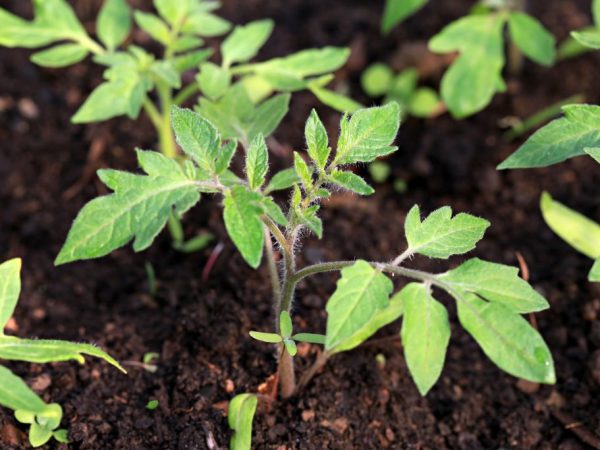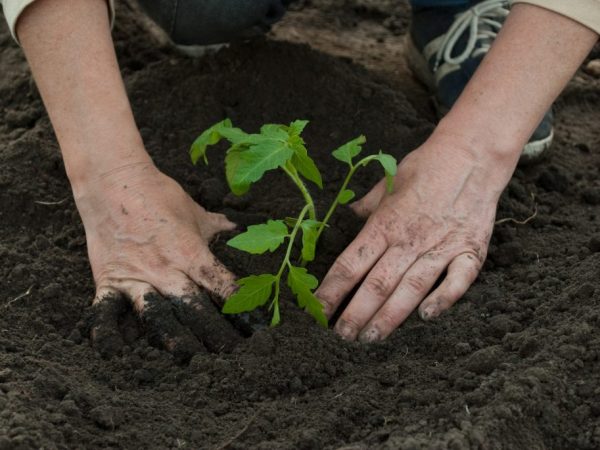Characteristics of Korolevich tomatoes
Tomato Korolevich is one of the most popular Varietal varieties of tomatoes among vegetable growers. The variety is characterized by versatility of use, as it has excellent taste, which allows it to be consumed both fresh and canned.

Characteristics of Korolevich tomatoes
Characteristic
Many gardeners are familiar with this variety of tomato. Its varietal characteristics are the result of the painstaking work of specialists in the field of breeding.
Description of the variety
The variety is a hybrid of the first generation, therefore it is not recommended to harvest the seed, as the varietal characteristics will not be preserved. Each year, for this type of nightshade crops, seedlings should be grown or ready-made planting shoots should be purchased.
The description says that tomatoes are resistant to a number of diseases and are resistant to temperature extremes.
The culture can be grown in the following conditions:
- open ground;
- greenhouse;
- film shelters.
The variety is characterized by an average yield. From one square meter, you can collect 2 kg of marketable fruits.
Description of the bush
The plant belongs to indeterminate varieties, characterized by medium ripeness. The bush has small leaves of a dark green hue. The tomato is characterized by a simple inflorescence, and the stalk has no articulation.
The shape of the bush is spreading, the plant must be tied up. It is also recommended to carry out pinching so that the bush grows, forming tomato clusters.
Description of fruits
Tomatoes of this variety are distinguished by good taste and have a number of advantages. The fruits of this variety have the following characteristics:
- heart-shaped;
- large-sized;
- the average weight of one fruit ranges from 200 to 800 grams;
- unripe fruit has a green tint, while ripe fruit is pink.
Tomatoes of this varietal type have a loose pulp structure. They are also characterized by weak ribbing. The fruits are suitable for preparing fresh salads, tomato sauces, and canned foods.
Growing seedlings

Strong seedlings will be the key to a good harvest
Like many tomato crops, this variety is grown in seedlings. For a good harvest, it is very important to grow quality planting material. Therefore, the best option is to grow seedlings at home.
Planting seeds
Before sowing seeds, you should take care of their disinfection and prepare fertile soil. Sowing is carried out in March, if the spring is early, then you can sow in February.
Recommendations for planting seeds:
- It is necessary to soak the seed in a weak solution of potassium permanganate.
- In order for the soil to be dense, it should be tamped and mulched with peat.
- Watering must be carried out through a strainer, this will evenly distribute the flow of water.
- The seeds can be spread into the prepared grooves with tweezers.
- Cover the container with the planted seeds with foil or transparent glass.
The boxes should be placed in a warm room, where the air temperature should be about 25 degrees Celsius. The sprouts can hatch after 2 weeks.
Sprout care
After the first shoots appear, you should take care of proper care. Seedling boxes must be placed in a well-lit place. For five to seven days, the room temperature should be 15-16 degrees Celsius. Further, the temperature needs to be increased to 20-22 degrees.
To grow seedlings, you also need:
- monitor the humidity in the room;
- timely feed the sprouts;
- remove weak stems.
When two true leaves appear on the plant, the seedlings should be dived. To do this, you can use plastic cups, in which the sprouts are planted one by one. A pick will allow the plants to grow and form a powerful root system.
Transplanting
On 60-65 days after sowing, in the phase of six to seven true leaves and one brush, where there is an inflorescence, the seedlings must be planted in open ground or in a greenhouse. Plants should be planted about 50 cm apart. Up to 2 kg of manure should be placed in each hole, thereby creating a nutritious base for tomatoes.
Fruits gain weight in the process of ripening, so you need to take care of the garter. It is recommended that after planting the seedlings, install supports on which the plants should be tied.
Fertilizer

Top dressing is essential for full growth
To ensure the full development of nightshade crops, it is necessary to carry out regular feeding. If fertilization is not carried out in a timely manner, tomatoes need the following substances:
- nitrogenous compounds;
- phosphoric solutions;
- potash fertilizers.
It is recommended to use complex preparations that will help tomatoes grow, bringing a good harvest. Organic matter should also be introduced, for this you can use wood ash or herbal tinctures.
Watering
Watering is carried out with warm water, which is poured directly under the root. Do not water with cold water, as you can damage the roots and the plant may die at an early stage.
Experienced growers recommend to slightly loosen the soil around the stem before watering. Before the next watering, you should always check the soil to prevent waterlogging.
Diseases
Tomatoes of this variety are resistant to diseases of nightshade crops. If the rules of care were not followed and the cultivation technique was violated, late blight may develop.
Waterlogging can provoke the development of root rot. This is manifested by yellowing of the leaves, and the bush itself stops growing without producing fruit.
Prophylaxis
As a preventive measure, stepchildren should be removed. This method will provide good ventilation and prevent late blight.
It is recommended that after the harvest has been harvested, the plants are removed from the garden. It is also necessary to adhere to the rules of crop rotation.
Conclusion
Tomato Royal is a high-yielding varietal variety, which makes it popular among all varieties of tomatoes. Thanks to a simple cultivation technique, even an inexperienced summer resident can grow this plant.
The fruits of this variety ripen gradually, this ensures the use of the tomato over a long period. Also, this feature allows harvesting for the winter, since the tomatoes on the branches ripen almost until the end of September.


